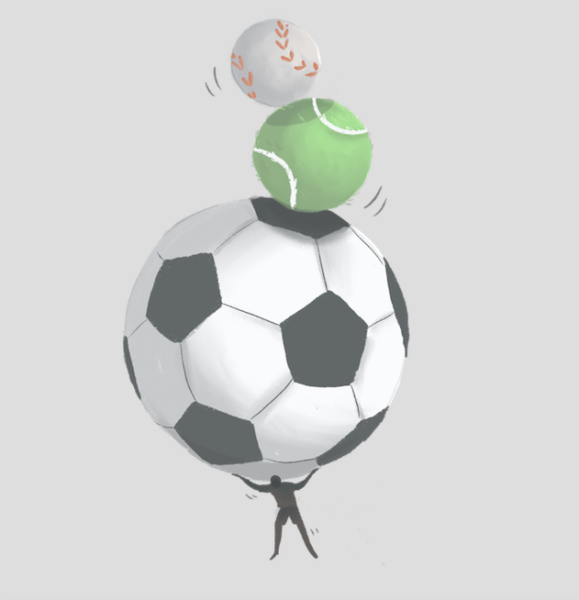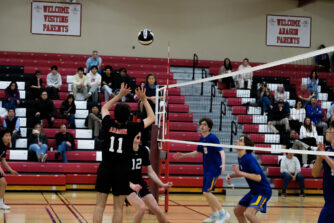

Ansu Fati, a forward for FC Barcelona, made his professional debut on Aug. 25, 2019. He was 16 years old. A month later, he developed knee problems. At first, he missed a few days of training at a time, 12 total in 2019. Nothing much happened
for over a year until Nov. 8, 2020, when Fati tore the meniscus in his left knee. It took four surgeries and almost 11 months for him to recover despite receiving professional-level training and medical care.
Fati is not alone with his experience. The Centers for Disease Control and Prevention estimate that 57.4% of all 14 to 18-year-old students in the U.S., around 8.7 million people, participate in sports. Within this group, more than two million high school athletes are injured every year, resulting in 500,000 doctor visits and 30,000 hospitalizations.
“Athletes have little to no instruction for proper nutrition, stretching techniques and the importance of rest days. Without these helpful tools, the risk of injury increases”
As a soccer player, I have had my fair share of soreness and injuries and I am acutely aware of the dangers of training and playing frequently. With developing bodies and unrelenting schedules, high school athletes are at high risk of injury.
High school students may also play two different sports at the same time. Attending two different practices a day and having multiple games on the weekend can lead to exhaustion and overexertion for athletes. Coaches don’t know, or don’t seem to care, about their multi-team athletes and push players to the max at every practice. A rest day on one schedule may be game day on another, leaving multi-team athletes with no rest at all.
Even the rules conspire against us. In Major League Soccer, for example, once a player is subbed out, they are not permitted to return to the game. The result? Athletes feel pressured to play through pain or injury so they can stay on the field. Furthermore, once a team runs out of substitutions, injured players must keep playing unless they want their team to be at a disadvantage. This pressure has traveled down to high school students as well. A study by nonprofit advocacy group Safe Kids Worldwide found that 54% of student-athletes report that they have played through injuries.
“A rest day on one schedule may be game day on another, leaving multi-team athletes with no rest at all”
The sports gear that kids use is also a problem. According to foot and ankle surgeon Dr. Al Ghamgosar, popular Nike and Adidas shoes are too light and flimsy. These weak shoes, coupled with many hours on the playing field, can lead to stress fractures, tendonitis and shin splints.
Professional soccer players get new cleats every three months so their light-weight, delicate cleats continue to support them. Most websites advise kids to buy cleats every half of a season in addition to having different pairs for games and practices. However, many high school students use the same pair of cleats for a longer period of time than they should. By the time they are able to buy new shoes, some athletic shoes fit poorly as they have fallen apart and no longer provide the necessary support to protect against injury.
Another issue in the competitive sports community is the lack of education surrounding injury prevention. Athletes have little to no instruction for proper nutrition, stretching techniques and the importance of rest days. Without these helpful tools, the risk of injury increases.
Our sleeping habits don’t help either. National Center for Biotechnology Information studies have shown that sleeping fewer than eight hours per night can nearly double one’s risk of injury. Unfortunately, according to the CDC, the average teenager sleeps less than the necessary eight hours.
Despite knowing about the risks, few athletes are likely willing to tone down their practice. The truth is, although the dangers of overuse are real, the desire to play overwhelms the risk. Many kids have played their sports for years and love the community, passion and fun associated with competing.
What student-athletes can do, however, is put in extra work to prevent injury. Strength and conditioning are important along with good nutrition and rest. On days without a scheduled practice, consider a stretching or rest day instead of going out to train. And your lucky shoes you’ve worn for two years? Time to replace them. Doing so might end up preventing an injury in the future and keep you on the field or court, playing the sport you love.



